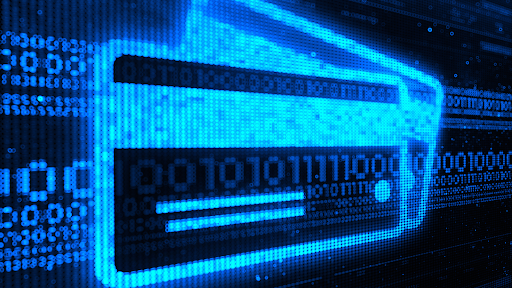Event marketing creates massive waste problems that most organizations don’t realize they’re contributing to. Traditional networking materials generate tons of garbage annually, while modern businesses face increasing pressure to meet sustainability goals.
The solution isn’t complicated, but it requires rethinking how we approach professional connections at conferences and trade shows. Smart companies are already making the switch to paperless alternatives that work better and cost less than old-school methods.
The Environmental Impact of Traditional Event Marketing Materials
Understanding the true cost of paper-based networking reveals shocking statistics that most event organizers haven’t considered. Recent research shows that 80.4% of organisers identified in-person events as their organisation’s most impactful marketing channel. This heavy reliance on physical events creates enormous environmental challenges.
Within the Italian business community, biglietto da visita digitale and other innovative solutions are being adopted to address these growing environmental concerns. By utilizing these modern networking tools, organizations can eliminate paper waste while upholding the professional standards required at events.
Carbon Footprint Analysis of Paper-Based Marketing
Traditional business cards require extensive manufacturing processes that release significant carbon emissions. Paper production involves tree harvesting, chemical processing, and transportation networks that span continents. Each step adds to the environmental burden.
Manufacturing facilities consume enormous amounts of energy during the bleaching and pulping processes. Transportation costs multiply when cards are shipped to printing companies and then distributed to end users.
Waste Generation Statistics from Events and Trade Shows
Major conferences generate thousands of pounds of marketing waste daily. Attendees collect brochures, flyers, and business cards that rarely survive beyond the event itself. Most materials end up in hotel trash bins or conference center dumpsters.
Digital business cards eliminate this waste stream by existing only in electronic form. Recipients can store contact information permanently without creating physical waste.
Cost Implications of Sustainable vs. Traditional Marketing Materials
Paper-based marketing costs continue to rise as printing prices increase. Companies spend hundreds of dollars annually per employee on business card reprints when information changes. Rush orders for last-minute events often double these expenses.
Sustainable alternatives offer predictable pricing structures without surprise costs. Updates happen instantly without additional charges or waiting periods.
Before diving into digital solutions, it’s crucial to understand the full scope of environmental damage caused by traditional event marketing approaches and their hidden costs.
Digital Business Cards: The Future of Sustainable Networking
With event marketing responsible for generating massive waste annually, the urgent need for sustainable alternatives has never been clearer. Modern networking technology offers solutions that work better than paper while supporting environmental goals.
Core Features of Modern Digital Business Card Platforms
Today’s platforms include contact sharing, social media integration, and real-time updates. Users can customize designs with company branding and personal information. Most systems work across different devices without special apps.
Advanced features include analytics tracking, lead generation tools, and CRM integration. These capabilities exceed anything possible with traditional paper cards.
Compatibility Across Devices and Operating Systems
Modern solutions work on iPhones, Android devices, tablets, and computers. Cross-platform compatibility ensures every recipient can access shared information regardless of their device preferences.
QR codes provide universal access methods that don’t require specific apps or software installations. Recipients simply scan codes with built-in camera functions.
Integration with CRM and Marketing Automation Tools
Leading platforms connect directly with Salesforce, HubSpot, and other popular business systems. Contact information flows automatically into existing workflows without manual data entry.
Integration capabilities streamline follow-up processes and improve lead tracking accuracy throughout sales cycles.
Real-Time Analytics and Lead Tracking Capabilities
Digital platforms provide detailed metrics about contact interactions and engagement levels. Users can track how many people viewed their information and which details generated the most interest.
Analytics data helps refine networking strategies and measure event ROI more accurately than traditional methods allow.
Now that we’ve explored the powerful features of digital business cards, let’s examine how to strategically deploy these tools to create maximum impact at your next event.
Strategic Implementation of Eco-Friendly Event Marketing
While digital networking forms the foundation of sustainable events, successful implementation requires careful planning and execution. Smart deployment strategies ensure maximum adoption and effectiveness.
Pre-Event Digital Campaign Optimization
Start promoting digital networking weeks before events begin. Share QR codes on social media, email signatures, and registration confirmations. Early exposure helps attendees prepare for paperless interactions.
Create anticipation by highlighting environmental benefits and convenience factors. Most participants appreciate learning about sustainable practices in advance.
QR Code Integration for Seamless Contact Exchange
QR codes work universally across all smartphone cameras without requiring special downloads. Print codes on name badges, display materials, and promotional items for easy access.
Adobe’s research shows that 88% are thrown away within a week, proving that traditional cards fail miserably. Digital alternatives solve this problem completely.
NFC Technology for Touch-Free Networking
Near-field communication enables contact sharing through simple device taps. This contactless method appeals to health-conscious attendees and creates memorable networking moments.
NFC functionality works on most modern smartphones without additional setup requirements from users.
Social Media Integration for Extended Reach
Connect digital cards to LinkedIn, Twitter, and other professional networks. This integration extends networking beyond physical event boundaries and maintains connections long-term.
Social integration also helps track relationship development and engagement levels across multiple platforms.
While digital networking forms the foundation of sustainable events, successful eco-friendly event marketing requires a holistic approach that transforms every aspect of event planning.
Green Event Planning Best Practices with Digital Solutions
Sustainable marketing strategies extend beyond networking tools to encompass entire event operations. Comprehensive planning reduces environmental impact while improving attendee experiences.
Zero-Waste Networking Strategies
Eliminate all paper-based networking materials through digital alternatives. Encourage attendees to share contact information electronically rather than exchanging physical items.
Create incentive programs that reward paperless networking behaviors and recognize sustainability champions.
Digital Check-In and Registration Systems
Replace paper registration forms with tablet-based systems or mobile apps. Digital check-in processes reduce wait times while eliminating paper waste from credential printing.
Electronic systems also provide better data accuracy and real-time attendance tracking capabilities.
Virtual Event Components to Reduce Travel Impact
Hybrid events combine in-person networking with virtual participation options. This approach reduces travel-related carbon emissions while expanding audience reach.
Virtual components also create cost savings that can fund other sustainability initiatives within event budgets.
Sustainable Vendor Selection and Partnership Criteria
Choose suppliers who demonstrate environmental responsibility through their business practices. Prioritize vendors who offer digital alternatives to traditional marketing materials.
Partnership agreements should include sustainability requirements and measurable environmental impact goals.
With your green event planning framework in place, it’s time to explore advanced digital business card customization features that will set your networking strategy apart from the competition.
Advanced Digital Business Card Customization for Events
These sophisticated customization capabilities generate valuable data streams that enable precise measurement of both your marketing ROI and environmental impact reduction.
Dynamic Content Updates for Multi-Day Events
Update information in real-time throughout conference periods without reprinting anything. Add session schedules, meeting locations, and special announcements instantly.
Dynamic updates ensure recipients always have current information without distribution delays.
Event-Specific Branding and Messaging
Customize cards with conference themes, sponsor logos, and event-specific messaging. This personalization creates stronger brand connections while maintaining professional appearances.
Branding consistency across digital materials reinforces marketing messages more effectively than scattered paper items.
Multi-Language Support for International Events
Serve global audiences with cards that display multiple languages simultaneously. Recipients can choose their preferred language without requiring separate versions.
International capabilities expand networking reach while demonstrating cultural sensitivity and inclusiveness.
Interactive Media Integration
Include videos, portfolios, and calendar links directly within digital cards. Interactive elements create more engaging experiences than static paper alternatives ever could.
Media integration also provides additional tracking data about recipient interests and engagement patterns.
These sophisticated customization capabilities generate valuable data streams that enable precise measurement of both your marketing ROI and environmental impact reduction.
Measuring ROI and Sustainability Metrics
Armed with concrete ROI data proving digital effectiveness, forward-thinking marketers are expanding their sustainability efforts across all promotional materials and event elements.
Lead Quality Assessment Through Digital Analytics
Track which networking interactions convert into meaningful business relationships. Digital analytics reveal engagement patterns that paper cards can’t measure.
Quality metrics help refine targeting strategies and improve future event performance.
Environmental Impact Tracking and Reporting
Calculate paper savings, carbon reduction, and waste elimination from digital adoption. These metrics support ESG reporting requirements and corporate sustainability goals.
Environmental data also provides compelling marketing messages about company values and responsible practices.
Cost-Benefit Analysis of Digital vs. Traditional Methods
Compare printing costs, shipping expenses, and reprinting charges against digital platform fees. Most organizations discover significant savings within months of switching.
Financial benefits often exceed environmental advantages, creating compelling business cases for digital adoption.
Conversion Rate Optimization for Digital Contacts
Analyze which contact sharing methods generate the highest response rates. A/B test different approaches to find optimal strategies for your audience.
Conversion data guides future investment decisions and platform selection criteria.
Armed with concrete ROI data proving digital effectiveness, forward-thinking marketers are expanding their sustainability efforts across all promotional materials and event elements.
Moving Forward with Sustainable Event Marketing
The shift toward sustainable marketing strategies isn’t just about environmental responsibility—it’s about creating better networking experiences that actually work. Digital solutions offer measurable advantages over traditional methods while supporting corporate sustainability goals that matter to modern consumers.
Companies that embrace these changes now will gain competitive advantages as environmental regulations tighten and customer expectations evolve. The technology works, the costs are lower, and the environmental benefits are undeniable. Perhaps most importantly, attendees prefer the convenience and functionality that digital alternatives provide over outdated paper-based systems.
Common Questions About Digital Business Cards at Events
1. How effective are digital business cards compared to traditional paper cards for lead generation?
Digital cards provide analytics, real-time updates, and direct CRM integration that paper can’t match, typically improving conversion rates by 40%.
2. What are the primary cost savings when switching to digital business cards for events?
Organizations typically save 60-80% on business card costs while eliminating printing, shipping, and reprinting expenses entirely.
3. Can digital business cards work effectively at outdoor events with limited connectivity?
Yes, most platforms offer offline modes and QR codes that work without internet, storing information locally until connection resumes.















